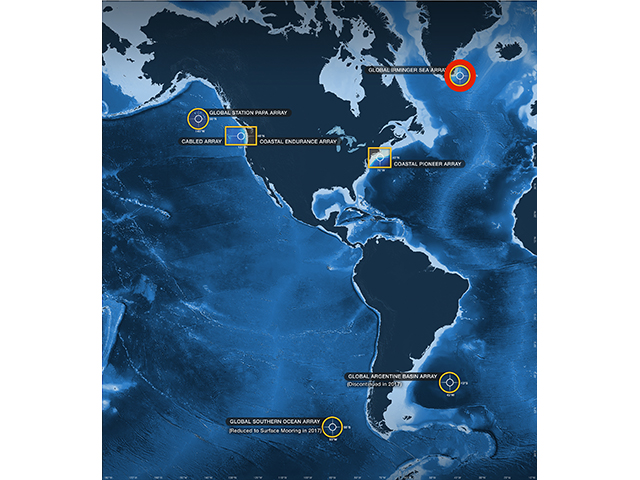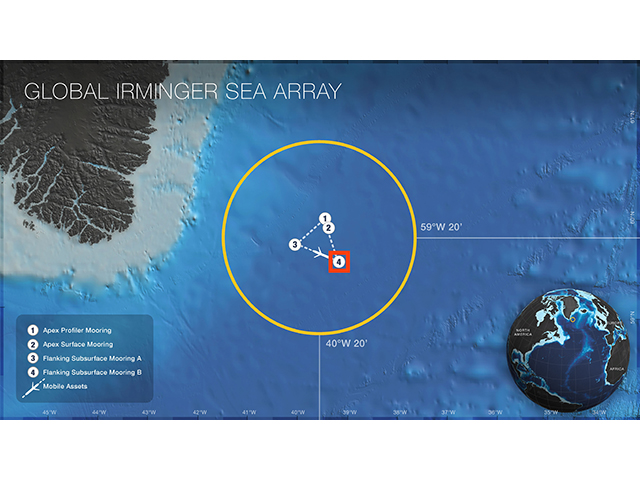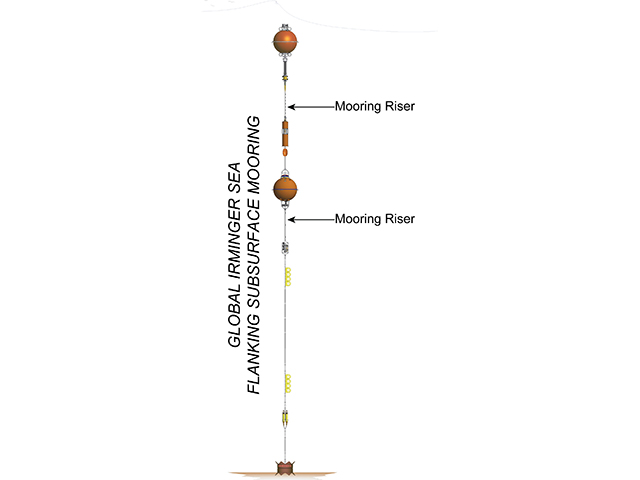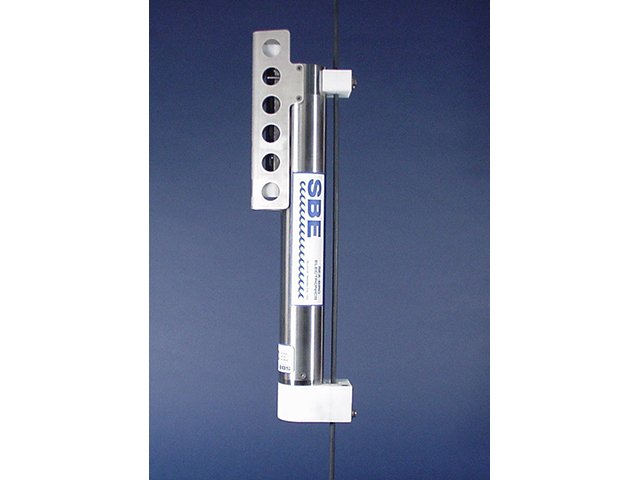Seasonal Variability In The Mixed Layer Exploration
Your Objective
Use water temperature observations and atmospheric data (wind and solar heating) from the North Atlantic Ocean to identify patterns and gain insights about interactions between the atmosphere and surface ocean:
- Investigate seasonal wind and solar irradiance patterns in the North Atlantic
- Make predictions about how surface winds and solar radiation affect mixing and the temperature structure of the surface ocean.
Specify temperature depths to plot:
Data Tips
The plots above show wind, solar irradiance and water temperature (at various depths) data for a multi-year period from the Irminger Sea Array in the North Atlantic Ocean. Specifically we are using surface meteorological data from the ECMWF reanalysis model, and CTD data from Flanking Mooring B. You can interact with these data by:
- Turning on and off water temperature time-series from different depths (surface, mid, deep)
- Zooming in and out of the data to look at different time scales that interest you by changing the width of the highlighted section of the bottom graph
- Hovering over data points to show data values for a specific time
- Hovering over the temperature timeseries to show the corresponding depth profile plot to the right.
Questions for Thought
- What variables can you investigate in these graphs? What are their units?
- Which of the variables shown here were collected in the ocean?
- When was the data first collected and when was the data last collected? Give these answers in month and year.
- How was the temperature data collected? What do the different colors represent?
- What is the overall range of wind speeds at this site? In what season is windspeed typically highest? In what season is it typically low?
- What is the overall range of solar irradiance at this site? In what season is irradiance typically high? In what season is it typically low?
- At which depth is there a larger seasonal range in temperatures (i.e. difference between winter and summer temp), 0 m or 1000 m?
- What does it mean, in terms of ocean stratification, when the temperature values at all depths on a given day are approximately the same (i.e. all the colored lines are squished together)? In what season does this happen?
- What does it mean, in terms of ocean stratification, when the temperature values are quite different on a given day (i.e. the colored lines are spaced far apart)? In what season does this happen?
- What patterns did you observe for wind and solar irradiance above the surface of the ocean at this site?
- What relationship do you observe between wind speed and water column stratification? Consider seasonality. Is the relationship direct or is there a lag time?
Background Information
Click on the images below to learn more about where and how the dataset above was collected.
What is stratification?
What is solar irradiance?
Dataset Information
The CTD data for this activity was obtained from the instruments deployed at Irminger Sea Flanking Mooring B.
Because the timeseries for the global Surface Moorings at each array is rather gappy, due to harsh weather conditions and instrument failures, we used the ERA5 Reanalysis Model from ECMWF to provide sea surface temperatures (0m), wind speed and irradiance data for each mooring.
Recovered datasets for each CTD (from 30m to 1,000m) were downloaded from the OOI data portal, cleaned, and then daily (mean) averaged, before being combined with the model reanalysis dataset and averaged again into weekly values in order to showcase seasonal cycles instead of daily variabilty.
See this Jupyter Notebook for details on how the data for this activity was processed.
Activity Citation: Eveleth, R., Lemkau, K., Miller, I., Smith, S., & Lichtenwalner, C. S. (2020). Seasonal Variability In The Mixed Layer. OOI Data Labs Collection.



